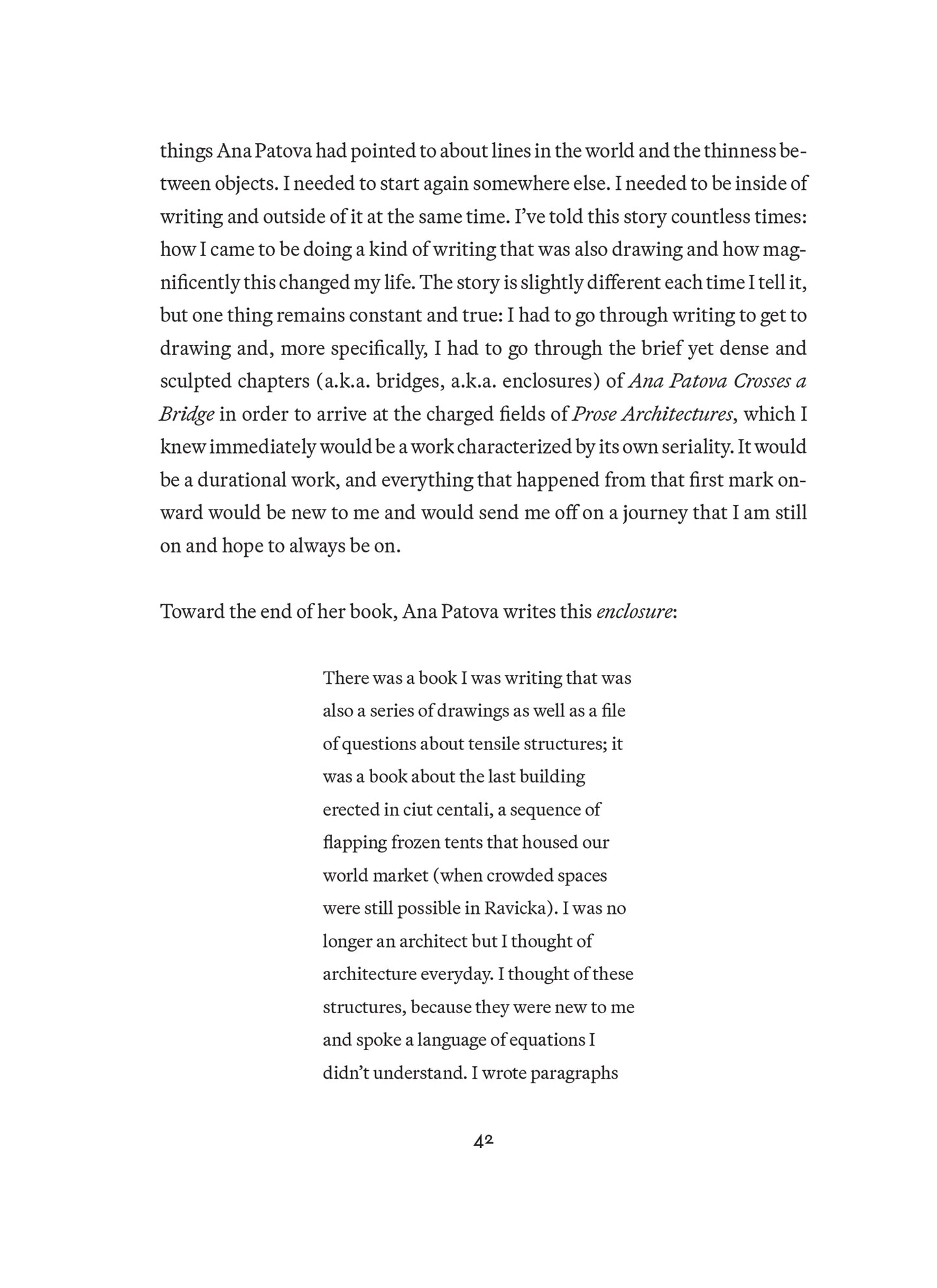



Theory for Moving Houses
Theory for Moving Houses
-
You are asking me where I live and it’s making me think all these things about space, where I start and end in space and where space starts and ends in me and when, in space, I am a body and when I’m a book, in space.
So begins Renee Gladman's Theory for Moving Houses, and with these lines we are invited into a liminal space of imagination and investigation, as Gladman guides us through the architectures of her poetics. Foundational here is a sense of fluidity, a slippage of time, a devotion to “non-linear and hyper gestural movement,” a communal spirit. Gladman’s inquiry into her intersecting practices of writing and drawing reveals a deep commitment to uncertainty and “fictional knowing.” Yet again, Gladman upends traditional expectations of prose, as she leads us through landscape of her Ravicka series novels, ultimately surprising us with a novel within nonfiction. The latest volume in Wave’s Bagley Wright Lecture Series, Theory for Moving Houses is not only visionary it its contemplations but also is a virtuosic example of the ways in which language can shape utopian sites of possibility.
-
A virtuosic aspect of Gladman’s writing is her ability to use simple diction and syntax to represent complexity… Gladman’s prose gives the effect of overlaying the expression of a thought to the thinking of it, as if to bring the writing as close as possible to the process of thought itself.
John Vincler, The Paris ReviewPrevious Praise:
She uses architecture as a metaphor for essay-building, poem-building, idea-building, language as a built environment and as a space of community. The ability of a sentence to create and transform is boundless.
Nicole Rudick, Poetry Foundation
With each shift in repetition, Gladman builds mystery as well as understanding. As she writes, these sentences will “loop the unknown and unfinish it” at the same time “these sentences will gather all the pauses into a flowing assembly.” When finished reading the book, readers “will antenna the unknown.” They will feel meaning rather than know it.
Julene Waffle, Adroit Journal
In the book, Gladman includes hand-drawn figures alongside poetry. The art pieces are often comprised of indecipherable, loopy script that accumulates into architectural-type structures. Some look like something akin to what you may have seen this morning, others from outer space.
Diana Arterian, Lit Hub
This attention to the movement and moment of the line distinguishes her work from those other experiments with drawn poems, such as Robert Grenier’s drawing poems or Cy Twombly’s calligraphic paintings, that we might reach to for comparison....It’s as if she’s discovered the place where the living line and the line of language converge after a temporary separation.
Mary Wilson, Jacket2
Publication Date: May 5, 2026
ISBN# 9798891060425 (6 x 8.25, 104pp, trade paper)
Couldn't load pickup availability








